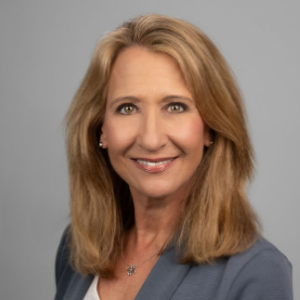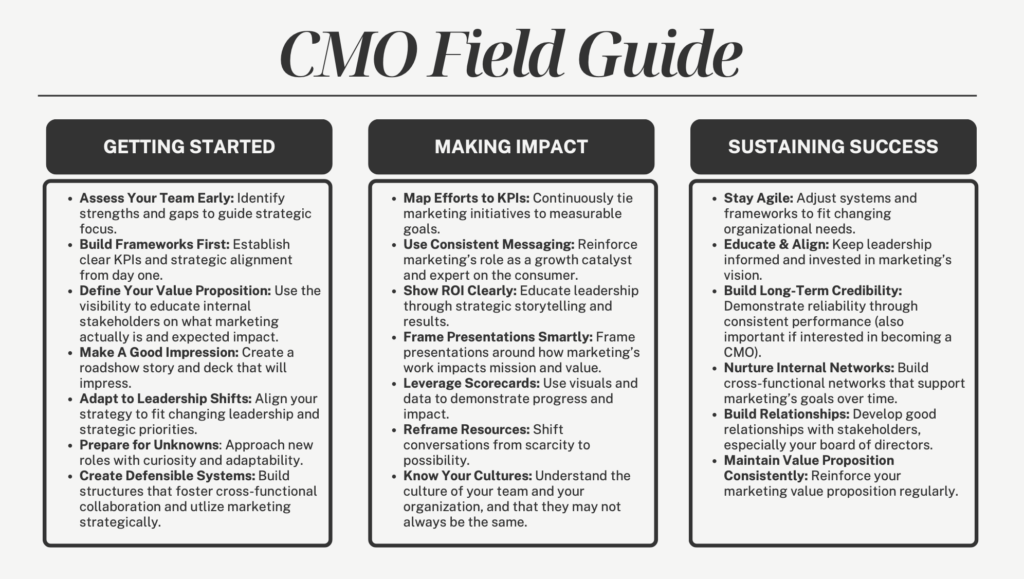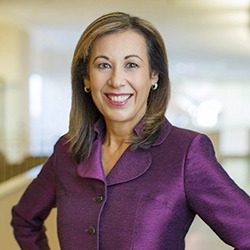How to Succeed in a New CMO Role: Lessons from Top Health Care Marketing Leaders
Notching some early wins builds relationships and trust.
// By Wendy Margolin //
 With all the ways marketing and health care have changed in recent years, the chief marketing officer (CMO) title might as well be called “chief magic officer.” CMOs today face massive demands. It’s no surprise that the average tenure for health care CMOs is 4.1 years, according to Harvard Business Review.
With all the ways marketing and health care have changed in recent years, the chief marketing officer (CMO) title might as well be called “chief magic officer.” CMOs today face massive demands. It’s no surprise that the average tenure for health care CMOs is 4.1 years, according to Harvard Business Review.
What a new CMO accomplishes in the first three months on the job can make or break their legacy. CEOs, marketing communications staff, and board members watch closely, and internal dynamics are complex.
Three seasoned CMOs joined a panel at the 2025 Healthcare Marketing & Physician Strategies Summit (HMPS) to share how they started in their roles and what really works when stepping into the top marketing job.
Read insights below from Suzanne Hendery, Renown Health; Andrew Chang, UChicago Medicine; and Kathy Smith, Roper St. Francis Healthcare. Camille Strickland, SVP Health at BVK, moderated the discussion.
Start Before Day One
All three panelists agree that the CMO job begins before the official first day.

Kathy Smith, vice president and chief marketing and digital officer, Roper St. Francis Healthcare
Kathy Smith took on her role at Roper St. Francis after working in multiple MarCom roles at Johns Hopkins Medicine for 20 years. Just before beginning her new position in Charleston, she heard a board member’s insider perspective at a social event that provided some motivation with a healthy dose of fear. “He told me not to underestimate the need to act quickly. They hired me for a reason, and they want me to advance change as quickly as I can,” she says.
Smith’s takeaway was that early visibility, active listening, and a strong narrative of collaboration would prove key to her success — good advice for anyone beginning a new marketing leadership role.
In her first 30 days, Smith met with 75 stakeholders, holding one-on-one meetings with team members and key physician leaders. She gave her small team the sense that she was there for them, not just for the leadership team.
A book for leaders in new positions, The First 90 Days: Proven Strategies for Getting Up to Speed Faster and Smarter by Michael D. Watkins, includes actionable advice and has proven helpful for the panelists.
Build Trust Through Relationships

Andrew Chang, chief marketing officer, UChicago Medicine
When Andrew Chang began at UChicago Medicine in 2023, he focused first on building relationships. That helped him understand the organization’s power structure and influencers. “You can’t find that out unless you’re listening, observing, and asking,” he says.
He built “a roadshow deck” to present to as many people as possible. That helped his new team understand his philosophy, marketing perspective, and goals for UChicago Medicine. He had a designer build the deck with him to make it stand out. “That’s your first impression, especially with the doctors, so you want to make it memorable,” he says.
Chang also set up a personal “board of directors” to gain guidance and mentorship through authentic conversations. “You want people who really understand how the place works so you can bounce ideas off them and build your reputation and trust as fast as you possibly can,” he says.

The three CMO panelists shared tips for getting started, making an impact, and sustaining success as a new health system CMO. Click photo to enlarge.
Go for Quick Wins

Suzanne Hendery, chief marketing and customer officer, Renown Health
Most new CMOs start with big goals, but smaller, quick wins help to gain trust. This is especially true when those wins are significant to the CEO. Suzanne Hendery joined Renown Health because the CEO prioritized patient experience, marketing, and communications.
Like Chang, Hendery showed up with “an awesome deck” that included her 90-day priorities. At the same time, she learned her CEO wanted a rebrand, national exposure, and better swag to represent the hospital outside of work. “He appreciated my plan, but it was also important that I got this done,” says Hendery.
Whether launching a campaign, improving swag, or getting your CEO on Becker’s list, quick wins build trust.
Diagnose the Team with a Surgeon’s Precision
An inherited MarCom team comes with a deep history. Some people are excellent, some are misaligned, and others may be reluctant to change. All three CMOs recommend hearing the perspective of as many team members as possible. “I wanted to listen very carefully to as many stakeholders as possible, because I wasn’t looking for just one person’s point of view. I was looking for trends,” says Smith.
Listening is essential, but it’s not enough. Smith recommends hiring a third-party assessor to get an unbiased read on team dynamics. When she did this at Roper St. Francis, it confirmed that her assessments and the consultants were aligned. Smith was able to confidently present an unbiased assessment of the department, outlining opportunities and weaknesses and a clear and quick action plan.
Setting up your team to function better is critical to a strong start, which could include letting go of legacy employees or restructuring roles to meet current and future needs.
Be a Cheerleader
Hendery inherited a few team members who were feared by coworkers as the “branding and logo police” rather than being supportive partners. Her fix was to shift the way everyone thought about marketing. “I think marketing is so much fun, and what we get to do every day is so joyous. Once I let those two people go, people started coming out of their shells and felt more empowered,” she says.
Supporting her new team also meant providing skills where they were lacking. For example, when Hendery learned most of her staff didn’t know how to write marketing plans with actionable KPIs, she held workshops to train her team, collaboratively review everyone’s work and build morale.
Prepare for Resistance, Especially Internally
When starting in a new role as CMO, the loudest resistance may come from the internal culture rather than budget or external challenges. Smith encountered some resistance when she tried to introduce external vendor partners to help her team earn some quick wins. The small team was mostly accustomed to doing everything in-house and some considered external vendors a sign of distrust.
Bringing in external partners can be a lifeline, especially if your in-house team lacks bandwidth or up-to-date expertise. But be prepared to explain why, again and again.
Smith shares, “I explained to my team that I was bringing a gift to them by expanding the team’s bandwidth with this talented vendor who can quickly put something in the market for us and that they would still be a part of the work and strategy.”
As you bring new ideas and methods to your new role, Hendery warns not to focus on your past organization. She advises, “You’ll want to do everything you did at your old place, but the minute you mention your old health system, people’s eyes will glaze over.”
Navigate Local Politics with Humility
For CMOs beginning in a smaller city or town, Hendery recommends paying attention to the local marketing ecosystem. Often, it’s relational, and in Hendery’s case, many of the local vendors were even relatives of co-workers. Cutting a local print or legacy vendor too fast can backfire, even when they’re ineffective. “I went to every community event I was invited to for the whole first year because I needed to understand the dynamics as I was uncoupling from those local agencies. It caused a big stir and could have taken me out very easily,” she says.
Remember Your Mission
Having a 60- or 90-day strategy helped all three panelists focus on why they were hired as CMO. While CMOs don’t treat patients, they are stewards of the brand, the voice of the community, and often the institution’s conscience. “We have a significant responsibility, and while our resources are limited, we have a pretty big budget, so it’s on us to make sure we spend that money as strategically and responsibly as possible,” says Chang.
Despite the challenges, the panelists agree that the hard work of being a new CMO is worthwhile. “Every day at work, I have a magic wand to do good things. I understand what patients and consumers want fixed, and we have incredible power as storytellers,” says Hendery.
Key Takeaways
- Deliver a point of view and plan within 60-90 days: “I made sure to have a plan to share within 60 days. That was burned into my brain.” — Kathy Smith
- Map the power structure: “You have to understand where the power structure lies and who has influence, and you can’t really find that out unless you’re listening, observing, and asking.” — Andrew Chang
- Win fast, visibly: “Quick wins are absolutely essential. It might be something really small like ordering better swag, but you’ve got to deliver quickly.” — Andrew Chang
- Audit the team carefully and diplomatically: Kathy Smith hired a third-party assessor to talk to the team and executives, so she wasn’t relying solely on her own observations. How you handle team assessment early on sets the tone.
- Ask, listen, adjust: “Before I presented my 60-day plan, I had already vetted it with as many people as I could to ask if it makes sense and if we are aligned.” — Kathy Smith
- Stay strategic amid chaos: “We had a crisis this morning, but even that rolls up to our overarching initiative of protecting and advancing our reputation. It’s not specifically called out on the plan, but it obviously fits the plan.” — Andrew Chang
- Lead with heart: “Marketing should be joyous. I empowered people, cheered them on, and gave them permission to do great work because that’s what we’re here for.” — Suzanne Hendery
As owner of Sparkr Marketing, Wendy Margolin helps busy health care marketing communications teams create more content. She’s on a mission to build a better medical web, one article at a time. Her favorite form of content is hospital brand journalism, which ties together her 25-year career in journalism, marketing, and health care.
